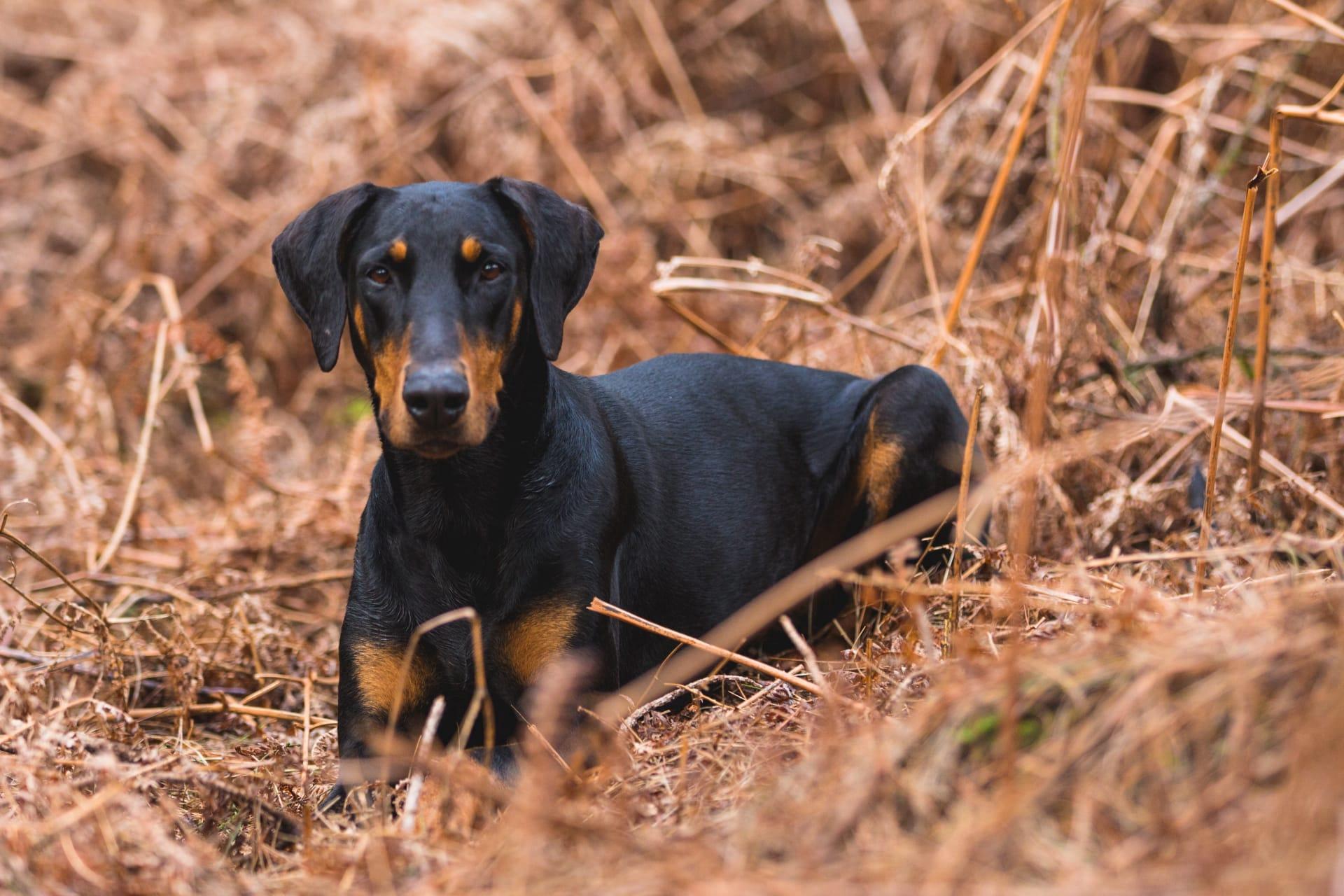Doberman Characteristics
- Home /
- Mini Encyclopedia /
- Animal /
- Doberman Characteristics
1
The Doberman, known for its sleek coat and athletic build, stands out with a muscular frame that's both elegant and imposing. Males typically measure 26 to 28 inches at the shoulder, weighing in at about 75 to 100 pounds, while females are slightly smaller, standing 24 to 26 inches tall and weighing 60 to 90 pounds. This breed boasts a life expectancy of 10 to 13 years, thriving with proper care and a healthy lifestyle. Their short, smooth coat, which comes in colors like black, red, blue, and fawn, all with rust markings, adds to their distinctive appearance, making them instantly recognizable.
Among their remarkable features, the Doberman's cardiovascular system stands out, particularly for its efficiency during high-intensity activities. This system supports their active lifestyle, enabling them to excel in various canine sports and demanding physical tasks. The heart of a Doberman pumps efficiently, circulating blood effectively to maintain oxygen and nutrient delivery to muscles during extended periods of activity. This physiological trait underlines their capability for endurance and agility, making them well-suited for roles that require both physical prowess and stamina.

2
Question: What's the most effective way to train a Doberman for obedience and agility?
Answer: Training a Doberman hinges on consistency, positive reinforcement, and early socialization. Starting from puppyhood, short, engaging training sessions several times a day can yield significant results. Utilizing treats and praises as rewards for desired behaviors reinforces positive actions without the need for harsh discipline. Dobermans respond well to challenges that engage both their body and mind, making agility training an excellent way to harness their energy and intelligence. Regular, varied exercises that include obedience drills, agility courses, and mental puzzles will keep a Doberman both physically fit and mentally sharp, ensuring they're well-behaved and responsive.

3
Dobermans are known for their high energy levels and need for regular, vigorous exercise. A daily routine that includes long walks, runs, or play sessions in a securely fenced area is crucial for their physical and mental well-being. Their athletic build and endurance make them excellent companions for jogging or hiking. Engaging them in canine sports such as agility, tracking, or obedience competitions not only channels their energy positively but also strengthens their bond with their owners.
When it comes to feeding, Dobermans thrive on a balanced diet rich in high-quality proteins to support their muscular physique and energy demands. Portion control is essential to prevent overfeeding, which can lead to obesity, especially given their hearty appetites. Meals divided into two servings a day, tailored to their age, size, and activity level, help maintain optimal weight and health. Regular check-ups with a veterinarian can provide guidance on the best dietary plan for individual needs, ensuring a balanced intake of nutrients.

4
The ideal living environment for a Doberman is one that offers ample space for movement and exercise, coupled with a warm, loving home atmosphere. They adapt well to both house and apartment living, provided their exercise needs are met. Dobermans form strong bonds with their family members and do best when included in daily activities. Their intelligence and alert nature make them excellent guard dogs, naturally protective of their home and loved ones.
Reproduction in Dobermans, like other breeds, requires responsible planning and care. The typical litter size ranges from 6 to 8 puppies, with breeding best undertaken under the guidance of veterinary and breed specialists to ensure health and genetic soundness. Ethical breeding practices involve health screenings for common genetic issues like hip dysplasia, heart conditions, and von Willebrand's disease, contributing to the overall well-being of the breed and the health of individual litters.

5
Book: "The Doberman Pinscher: Brains and Beauty" - Authored by Rod Humphries in the United States during the late 1990s, this book offers a comprehensive look at the Doberman breed, covering aspects from history and development to training and care. Humphries provides insights into the breed's intelligence, versatility, and noble character, making it a valuable resource for both prospective and current Doberman owners looking to understand and nurture their pets effectively.
Book: "Dobermans: A Practical Guide for Owners and Breeders" - Written by Jayne Shenstone in the UK in the early 2000s, this book delves into the specific needs and characteristics of Dobermans. Shenstone covers a range of topics, including breed history, health care, training, and socialization, with a focus on responsible ownership and breeding. Her practical advice and real-life examples serve as an essential guide for anyone looking to deepen their understanding of this dynamic breed.